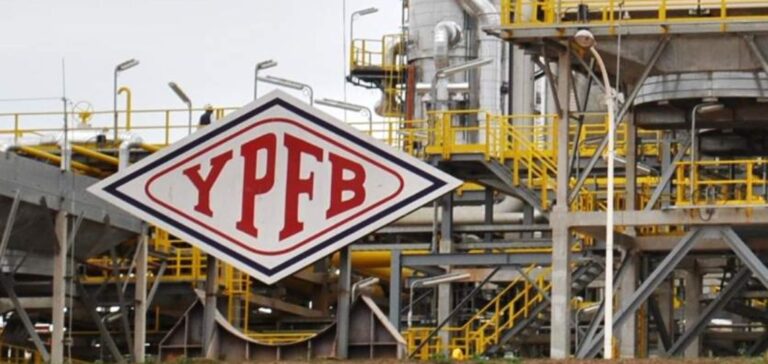YPFB (Yacimientos Petrolíferos Fiscales Bolivianos) has begun drilling the Villamontes-X7 well in the Tarija department of southeastern Bolivia.
This project explores the Chorro and Tupambi formations, areas historically rich in hydrocarbons.
The aim is to boost exploration and production, after a decade of significant decline. Since 2022, YPFB has launched 42 exploration projects to revitalize production.
Bolivian oil production fell by 59%, from 51,100 barrels per day (b/d) to 21,000 b/d last April.
At the same time, gas production fell by 44% to 33.8 million cubic meters per day (m³/d), compared with a peak of 60.8 million m³/d in 2014, according to the National Statistics Institute (INE).
Potential of the Chorro and Tupambi Formations
The Chorro and Tupambi formations have a production potential of 27 million cubic feet per day, according to YPFB estimates.
This exploration is in line with the mandate of Bolivian President Luis Arce, who has emphasized the strategic importance of these projects for the country’s energy independence.
YPFB President Armin Dorgathen stresses that these projects are essential for reducing dependence on imported petroleum products and strengthening energy self-sufficiency.
Recently Announced Discoveries
Since the launch of its exploration campaign, YPFB has announced several significant discoveries.
The most notable is the Mayaya field, located in the undeveloped northwest of the country.
This field contains around 1.7 trillion cubic feet (Tcf) of resources and has the potential for new discoveries in nearby structures.
Mayaya is expected to produce 10 million m³/d of gas and up to 1,000 b/d of oil, according to YPFB.
President Arce urged YPFB to accelerate the development of Mayaya by drilling three additional wells.
In a televised broadcast on July 23, he stressed the need for these projects to reduce dependence on fuel imports, which he described as a heavy burden on the national economy.
Implications for Energy in Bolivia
The intensification of exploration and production by YPFB is crucial for Bolivia.
After years of little exploration, the resumption of these activities is vital to avoid increased dependence on hydrocarbon imports.
New projects, such as the Villamontes-X7 drilling and the Mayaya discoveries, could not only boost domestic production, but also stimulate the economy through job creation and increased exports.
Boosting local production is also strategic for improving Bolivia’s position on the regional and international hydrocarbon markets.
By increasing natural gas and oil production, Bolivia could more effectively meet the growing demand for clean, renewable energy.
The current drilling campaign reflects the determination of YPFB and the Bolivian government to revitalize the country’s energy sector.
The focus on exploration and production is essential to ensure long-term energy security and to fully exploit the country’s natural resources.






















